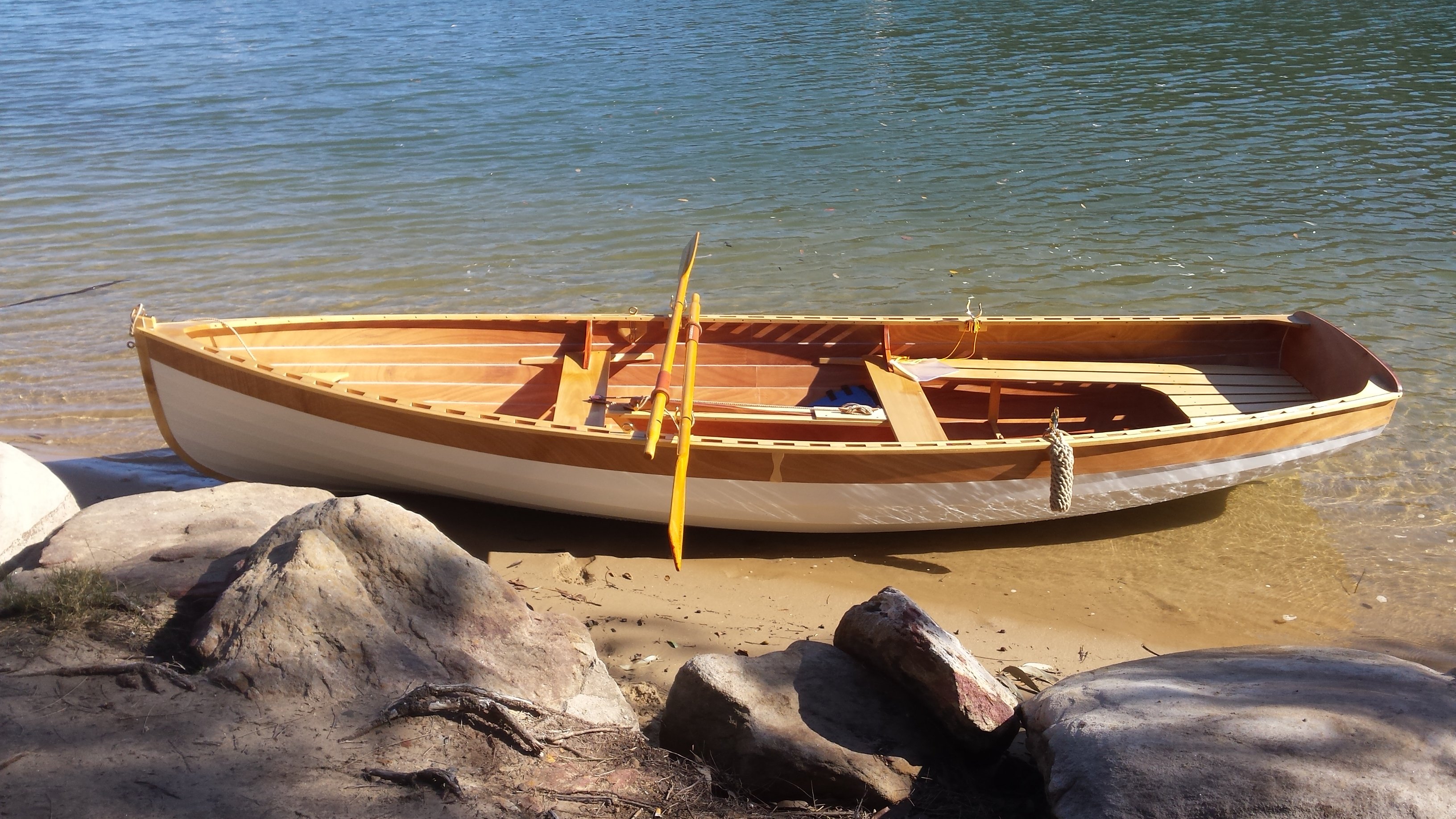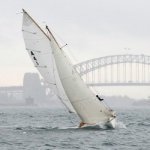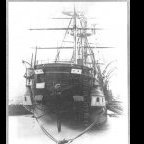MORE HANDBOOKS ARE ON THEIR WAY! We will let you know when they get here.
×
-
Posts
1,281 -
Joined
-
Last visited
Reputation Activity
-
 Bedford reacted to Mark Pearse in Ranger type yacht by Mark Pearse - 1:12 - SMALL
Bedford reacted to Mark Pearse in Ranger type yacht by Mark Pearse - 1:12 - SMALL
Hi John
yes I did, & got some brass flat strips from them - at 6mm or 1/4 width. I can use a sanding block to reduce a small amount of that, to say 5 or 4mm width.
As a follow-up, I did get some brass square C channel via eBay (3 x 1mm, 300 long) by Albion Alloys UK, the shipping hurt but I'll recover......
-
 Bedford got a reaction from Jack12477 in Ranger type yacht by Mark Pearse - 1:12 - SMALL
Bedford got a reaction from Jack12477 in Ranger type yacht by Mark Pearse - 1:12 - SMALL
Mark, I tend to buy my brass stock from various ebay sellers but I'm not sure what sizes are available, what sort of parts are you talking about and what sizes would you need
-
 Bedford got a reaction from Mark Pearse in Tally Ho by vaddoc - scale 1:12 (maybe) - as rebuilt by Leo
Bedford got a reaction from Mark Pearse in Tally Ho by vaddoc - scale 1:12 (maybe) - as rebuilt by Leo
Vaddock, I was wondering what you're up to and now I know.
I've watched several of Leos videos too. He really knows his craft doesn't he.
Funnily enough, as a builder of full sized sailing boats, I get lost in all the discussion about lines and often wonder just how important all those calculations are but I guess they must be because people use them.
So I'll just sit quietly on the sidelines until you start making sawdust
-
 Bedford got a reaction from FreekS in Gaff sloop of unknown design c. 1910 by Bedford - RESTORATION - possibly to RC
Bedford got a reaction from FreekS in Gaff sloop of unknown design c. 1910 by Bedford - RESTORATION - possibly to RC
The more I dug into the deck situation the more I realised the only viable option was to remove the gunwale then the margin boards and bring the hull back to level with the top of the sheer strake. So I cut off the bulwarks at the bow which won't be reusable except for the cap rails and proceeded to remove the stbd gunwale. I was looking at ways to cut it off so I might reuse it but that wasn't viable so I planed it off. Spotted Gum is a very tough timber but it planes beautifully so it didn't take long to remove, port side next then finding a way to remove the remnants of the deck.
I didn't touch it today because after dodging it for 6 years I finally succumbed to covid and the energy levels just aren't there.
-
 Bedford got a reaction from Jim Lad in Gaff sloop of unknown design c. 1910 by Bedford - RESTORATION - possibly to RC
Bedford got a reaction from Jim Lad in Gaff sloop of unknown design c. 1910 by Bedford - RESTORATION - possibly to RC
Yes, being stuck at home with Covid has some small advantages
-
 Bedford got a reaction from Keith Black in Gaff sloop of unknown design c. 1910 by Bedford - RESTORATION - possibly to RC
Bedford got a reaction from Keith Black in Gaff sloop of unknown design c. 1910 by Bedford - RESTORATION - possibly to RC
Yes, being stuck at home with Covid has some small advantages
-
 Bedford got a reaction from Keith Black in Gaff sloop of unknown design c. 1910 by Bedford - RESTORATION - possibly to RC
Bedford got a reaction from Keith Black in Gaff sloop of unknown design c. 1910 by Bedford - RESTORATION - possibly to RC
The overabundance of woodwork has been removed more easily than I had anticipated thanks largely to a new bit I found for the Dremel and the fact that a lot of it was just stuck in with silastic so a short crack with a small hammer broke them loose.
The Dremel bit
I took two sections of keel frame out to allow the installation of auxiliary drive so now I can fit up to a 540 can motor comfortably.
Interestingly this next pic shows an epoxy filled mast step in the keel just forward of the bottom frame which raises more questions about what this model has been through given it appears to have never been finished.
-
 Bedford got a reaction from Keith Black in Tally Ho by vaddoc - scale 1:12 (maybe) - as rebuilt by Leo
Bedford got a reaction from Keith Black in Tally Ho by vaddoc - scale 1:12 (maybe) - as rebuilt by Leo
Vaddock, I was wondering what you're up to and now I know.
I've watched several of Leos videos too. He really knows his craft doesn't he.
Funnily enough, as a builder of full sized sailing boats, I get lost in all the discussion about lines and often wonder just how important all those calculations are but I guess they must be because people use them.
So I'll just sit quietly on the sidelines until you start making sawdust
-
 Bedford got a reaction from MAGIC's Craig in Gaff sloop of unknown design c. 1910 by Bedford - RESTORATION - possibly to RC
Bedford got a reaction from MAGIC's Craig in Gaff sloop of unknown design c. 1910 by Bedford - RESTORATION - possibly to RC
I've spent the day removing the last remnants of the gunwales and deck. There was an awful lot of sanding to get rid of thick glue in the bow and stern, no idea what the glue is but it's tough to get rid of.
Meanwhile I have no idea what sort of conditions the original builder thought this model might be subject to but it's built like an ice breaker. Huge oregon frames 15mm thick with a massive bow frame and the compression post is 1/4 the size of the one I put in my recent full size 17 foot build!
If she's to become an RC sailer I'll have to find a way to get rid of a lot of it.
-
 Bedford got a reaction from ccoyle in Gaff sloop of unknown design c. 1910 by Bedford - RESTORATION - possibly to RC
Bedford got a reaction from ccoyle in Gaff sloop of unknown design c. 1910 by Bedford - RESTORATION - possibly to RC
I've spent the day removing the last remnants of the gunwales and deck. There was an awful lot of sanding to get rid of thick glue in the bow and stern, no idea what the glue is but it's tough to get rid of.
Meanwhile I have no idea what sort of conditions the original builder thought this model might be subject to but it's built like an ice breaker. Huge oregon frames 15mm thick with a massive bow frame and the compression post is 1/4 the size of the one I put in my recent full size 17 foot build!
If she's to become an RC sailer I'll have to find a way to get rid of a lot of it.
-
 Bedford got a reaction from Keith Black in Gaff sloop of unknown design c. 1910 by Bedford - RESTORATION - possibly to RC
Bedford got a reaction from Keith Black in Gaff sloop of unknown design c. 1910 by Bedford - RESTORATION - possibly to RC
I've spent the day removing the last remnants of the gunwales and deck. There was an awful lot of sanding to get rid of thick glue in the bow and stern, no idea what the glue is but it's tough to get rid of.
Meanwhile I have no idea what sort of conditions the original builder thought this model might be subject to but it's built like an ice breaker. Huge oregon frames 15mm thick with a massive bow frame and the compression post is 1/4 the size of the one I put in my recent full size 17 foot build!
If she's to become an RC sailer I'll have to find a way to get rid of a lot of it.
-
 Bedford reacted to wefalck in Pomeranian Rahschlup 1846 by wefalck – 1/160 scale – single-masted Baltic trading vessel
Bedford reacted to wefalck in Pomeranian Rahschlup 1846 by wefalck – 1/160 scale – single-masted Baltic trading vessel
Pat, I used to suffer from 'tool envy' for many years, until I entered professional life and was able to acquire machine tools. And as we know, machines/tools allow one to make more machines/tools. It kind of developed into a secondary/subsidiary hobby then, together with the supporting process and market knowledge. I love in particular the look and feel of pre-1950s tools and machines, before everything became plasticky and boxy.
-
 Bedford reacted to wefalck in Pomeranian Rahschlup 1846 by wefalck – 1/160 scale – single-masted Baltic trading vessel
Bedford reacted to wefalck in Pomeranian Rahschlup 1846 by wefalck – 1/160 scale – single-masted Baltic trading vessel
Thank you very much for the kind words and the many 'likes' 👍🏻
****************************************************************
Pin-rails 2
As can be seen on drawings and old photographs, the pin-rails often rested on consoles attached to the bulwark stanchions for added strength. As about a dozen were needed, they were ‘mass-produced’ from a shaped styrene profile.
Milling the profile for the consoles to support the pin-rails
The shaped profile for the consoles
A 1.5 mm x 1 mm rod was stuck to a small ‘wax-chuck’ on the micro-milling machine with doubled-sided mounting tape. The rod was then oriented exactly parallel to the axis of the cross-slide and a hollow milled with a 1.5 mm ball-end burr.
Slicing off consoles with the micro-guillotine
The edges were rounded with a fine file. This profiled rod was then transferred to the newly built micro-guillotine and slices of 0.7 mm thickness cut off. These miniature consoles then were stuck to the underside of the pin-rails. Once painted, they will be attached as units to the bulwarks.
Collection of consoles
Consoles cemented to a pin-rail
Micro-Guillotine
The micro-guillotine was constructed around a part-machined cast-iron blank for a staking tool I found on ebay. Originally, I intended to fabricate all parts from steel, but I could not obtain a suitable blank for the rotating table and neither had the right steel bars in stock. So, for the time being at least, the parts were fabricated from 3 mm ABS sheet that I happened to have.
The cutting blade is a shortened chisel-shaped scalpel-blade. It is set into an exactly fitting slot in the 6 mm steel runner and secured with a steel ring. The knob on the runner is an old bakelite instrument knob. The 6 mm wide blade restricts the cutting capacity to 3 mm for 90° cuts and correspondingly less for cuts at an angle. This is a conscient restriction, as this tool is really meant to only cut parts up to 2 mm by 2 mm cross-section.
To cut at an angle, the plate is turned, rather than the cutter as in other designs. The narrow gap between the guides ensures that also very small parts can be cut. Their length can be set by the adjustable brass stop.
To be continued …
-
 Bedford got a reaction from Keith Black in Gaff sloop of unknown design c. 1910 by Bedford - RESTORATION - possibly to RC
Bedford got a reaction from Keith Black in Gaff sloop of unknown design c. 1910 by Bedford - RESTORATION - possibly to RC
The more I dug into the deck situation the more I realised the only viable option was to remove the gunwale then the margin boards and bring the hull back to level with the top of the sheer strake. So I cut off the bulwarks at the bow which won't be reusable except for the cap rails and proceeded to remove the stbd gunwale. I was looking at ways to cut it off so I might reuse it but that wasn't viable so I planed it off. Spotted Gum is a very tough timber but it planes beautifully so it didn't take long to remove, port side next then finding a way to remove the remnants of the deck.
I didn't touch it today because after dodging it for 6 years I finally succumbed to covid and the energy levels just aren't there.
-
 Bedford got a reaction from ccoyle in Gaff sloop of unknown design c. 1910 by Bedford - RESTORATION - possibly to RC
Bedford got a reaction from ccoyle in Gaff sloop of unknown design c. 1910 by Bedford - RESTORATION - possibly to RC
The more I dug into the deck situation the more I realised the only viable option was to remove the gunwale then the margin boards and bring the hull back to level with the top of the sheer strake. So I cut off the bulwarks at the bow which won't be reusable except for the cap rails and proceeded to remove the stbd gunwale. I was looking at ways to cut it off so I might reuse it but that wasn't viable so I planed it off. Spotted Gum is a very tough timber but it planes beautifully so it didn't take long to remove, port side next then finding a way to remove the remnants of the deck.
I didn't touch it today because after dodging it for 6 years I finally succumbed to covid and the energy levels just aren't there.
-
 Bedford got a reaction from MAGIC's Craig in Gaff sloop of unknown design c. 1910 by Bedford - RESTORATION - possibly to RC
Bedford got a reaction from MAGIC's Craig in Gaff sloop of unknown design c. 1910 by Bedford - RESTORATION - possibly to RC
John, that's always been on the cards, and I have the gear to do it, but since you can't scale the wind RC yachts tend to often sail in East Coast Low conditions so they have ballast bulbs well below the keel. This model has ballast weight built into the keel (see the black portion in the above pics) but I don't know what it is. It's fibreglassed over.
Is it heavy enough?
Can it be drilled to allow attachment of extra ballast while sailing?
Would I sail it much?
How long is a piece of string?
-
 Bedford got a reaction from Keith Black in Gaff sloop of unknown design c. 1910 by Bedford - RESTORATION - possibly to RC
Bedford got a reaction from Keith Black in Gaff sloop of unknown design c. 1910 by Bedford - RESTORATION - possibly to RC
John, that's always been on the cards, and I have the gear to do it, but since you can't scale the wind RC yachts tend to often sail in East Coast Low conditions so they have ballast bulbs well below the keel. This model has ballast weight built into the keel (see the black portion in the above pics) but I don't know what it is. It's fibreglassed over.
Is it heavy enough?
Can it be drilled to allow attachment of extra ballast while sailing?
Would I sail it much?
How long is a piece of string?
-
 Bedford got a reaction from Keith Black in Gaff sloop of unknown design c. 1910 by Bedford - RESTORATION - possibly to RC
Bedford got a reaction from Keith Black in Gaff sloop of unknown design c. 1910 by Bedford - RESTORATION - possibly to RC
Well I've ripped the whole deck off because the planks were not glued down properly everywhere and the "tar" was just cheap wood filler putty which was falling out, I tried just removing the planks from the ply substrate but where it was glued well it was really glued on and the substrate ply is way too thin and flexes under the chisel so it's gone.
There will now be a lot of carving, cutting and sanding to get the frame tops even and ready for new beam shelves (of which there are none) and deck frames.
I'm also considering rigging options, as a Bermudan rig the mast will rise 1.9mtrs above the deck meaning she'd have to live on the floor which would hide the beautiful lines of the hull. As a gaffer the mast would rise 1.5mtrs which still leaves the boat itself pretty low on display. One option rattling around is to do it like an admiralty model with only about 250mm of mast so the hull is displayed at a much better height.
-
 Bedford reacted to wefalck in Pomeranian Rahschlup 1846 by wefalck – 1/160 scale – single-masted Baltic trading vessel
Bedford reacted to wefalck in Pomeranian Rahschlup 1846 by wefalck – 1/160 scale – single-masted Baltic trading vessel
Work was been interrupted again, this time by some business travel to Tallinn for a few days, where I had also the opportunity to visit the Estonian Maritime Museum. Unfortunately, I came back from there with a sort of bronchitis that bogged me down for a couple of weeks ...
Pin-rails
Another delay in actual shop-work was caused that I first had to work out were the pin-rails would go and how many pins they have to have to provide the necessary belaying points.
Drilling the pin-rails using the micro-mill as a coordinate drilling machine
The pin-rails are 2.2 mm wide strips cut from 0.8 mm thick acrylic sheet. The holes were drilled using the micro-milling machine as a coordinate drill to get the distances right. The outer edges of the pin-rails were rounded as can be seen on many prototype photographs. The inner edges were notched for the bulwark stanchions on the filing-machine.
Cutting the notches for the stanchions on the filing-machine
Cutting the notches for the stanchions on the filing-machine
Collection of pin-rails
Pin-rails loosely attached at their designated location
To be continued …
-
 Bedford got a reaction from mandolinut in Gaff sloop of unknown design c. 1910 by Bedford - RESTORATION - possibly to RC
Bedford got a reaction from mandolinut in Gaff sloop of unknown design c. 1910 by Bedford - RESTORATION - possibly to RC
Some more pics
-
 Bedford got a reaction from Knocklouder in Herzogin Cecilie 1902 by Jim Lad - Four Masted Barque
Bedford got a reaction from Knocklouder in Herzogin Cecilie 1902 by Jim Lad - Four Masted Barque
Best wishes John
-
 Bedford got a reaction from Keith Black in Gaff sloop of unknown design c. 1910 by Bedford - RESTORATION - possibly to RC
Bedford got a reaction from Keith Black in Gaff sloop of unknown design c. 1910 by Bedford - RESTORATION - possibly to RC
Thanks Keith, I'll have to have a good look through that lot
Trevor, you've got me further ahead then I was, thanks.
-
 Bedford got a reaction from Kenchington in Gaff sloop of unknown design c. 1910 by Bedford - RESTORATION - possibly to RC
Bedford got a reaction from Kenchington in Gaff sloop of unknown design c. 1910 by Bedford - RESTORATION - possibly to RC
Thanks Keith, I'll have to have a good look through that lot
Trevor, you've got me further ahead then I was, thanks.
-
 Bedford got a reaction from wefalck in Gaff sloop of unknown design c. 1910 by Bedford - RESTORATION - possibly to RC
Bedford got a reaction from wefalck in Gaff sloop of unknown design c. 1910 by Bedford - RESTORATION - possibly to RC
Some more pics
-
 Bedford got a reaction from wefalck in Gaff sloop of unknown design c. 1910 by Bedford - RESTORATION - possibly to RC
Bedford got a reaction from wefalck in Gaff sloop of unknown design c. 1910 by Bedford - RESTORATION - possibly to RC
Well, this is my second restoration of a model donated to the Lake Macquarie Classic Boatshed. This has been sitting on the Mezzanine for a few years and the lines are just so beautiful I couldn't leave her to be eventually discarded. Did I need another model project at this point, not really but here it is.
We have no idea what she is modeled after but it's in the style of the Fife sloops of the early 1900's and since it has a bowsprit I'm thinking gaff rigged so I'm taking very loose inspiration from the William Fife III designed "Mariska"
It will be "stand off scale" as we used to say n the aero-modelling field. as it may end up with radio control added but let's not get ahead of ourselves.
The hull is 1460 long, so quite large and planked in Oregon which was varnished in what appears to be the old Estapol, that had to go so a hot air gun and scrapers got most of that off with the rest removed by scraping and sanding. This process revealed the truth about her beauty, it's very much skin deep. Some of the planks have been sanded to within 0.02mm of their lives in order to achieve fair lines, you can see light through them! What this means is that whether or not I add RC she's going to have to be fibregassed so I've ordered some 30gsm cloth. Hopefully I can get a good enough finish to allow varnishing over the 'glass but I may need to paint below the waterline anyway to cover water damage and poor fairing of strakes at the stern post.
I can't reinforce the strakes internally as it's quite roughly finished and I'd have to sand back a thick layer of black paint which is over varnish, I'm not prepared for that debarkle and chances are I'd go through the thin strakes anyway. The internal framing is quite substantial and, in places, broken so I'll have to do something to stabilise that and possibly create the room for auxilliary drive should she become an RC sail boat.
Anyway, on to the pics. Oh, and the tabernacle is decidedly agricultural for a model with some beautiful features so it's going.











